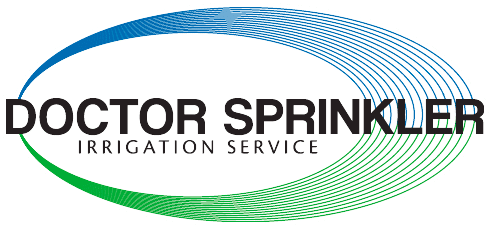How Is Extensive Drip Irrigation Installed? The Doctor’s Guide
Installing a drip irrigation system can significantly enhance the efficiency of your watering practices, ensuring that plants receive the precise amount of water they need without wasting resources. Drip irrigation is remarkably efficient, allowing plants to use about 90% of the water applied, whereas traditional sprinklers manage only 65-75% efficiency. This guide will walk you through the comprehensive steps of setting up an extensive drip irrigation system to keep your garden or crop field thriving.
Planning Your Drip Irrigation System Design
Planning the design of your drip irrigation system is the first and most critical step in the installation process. Begin by assessing your area’s layout and specific needs, including the water source, terrain, and types of plants you intend to irrigate. Careful planning ensures that your system is efficient and effective, maximizing water conservation and reducing utility costs. The Environmental Protection Agency (EPA) notes that drip irrigation systems can save up to 50% more water compared to traditional sprinkler systems. Take time to map out where each component will be placed, from mainlines to emitters, ensuring optimal water distribution. A well-thought-out design is essential for the system’s overall performance and longevity, preventing issues down the line and ensuring your plants receive the precise amount of water they need.
Gathering the Necessary Components
Once your design is complete, the next step is to gather the components necessary for your irrigation installation. Essential parts include mainlines, lateral lines, emitters, valves, pressure regulators, and filters. Mainlines serve as the primary conduit for water distribution, while lateral lines branch off to reach individual plants. Emitters control the flow of water to each plant, and valves regulate sections of the system. Pressure regulators are vital to maintaining consistent water pressure, and filters prevent debris from clogging the system. Ensure you have the right materials on hand to set a solid foundation for a successful installation.
Laying Out the Mainlines and Lateral Lines
With your components ready, lay out the mainlines and lateral lines according to your design plan. Connect the main line to the water source, ensuring it runs through the designated areas efficiently. Position the mainline so that it covers the most critical zones first. Attach the lateral lines to the mainline, arranging them strategically to deliver water directly to the plants. It’s essential to keep the lateral lines as straight as possible and avoid sharp bends, which can disrupt water flow. Secure the lines with stakes to keep them in place, especially in areas with uneven terrain. Proper spacing and alignment of these lines are crucial for achieving even water distribution, ensuring each plant receives adequate hydration.
Installing Pressure Regulators and Filters
Properly installing pressure regulators and filters is crucial to the efficiency of your drip irrigation system. Begin by selecting regulators that match the system’s specifications, ensuring they can handle the expected flow rates and pressure levels. Install the pressure regulators close to the water source to maintain consistent and controlled pressure throughout the entire system. This helps prevent over-pressurization, which can cause damage to components and uneven water distribution.
Next, add filters to keep the system free of debris, which can clog emitters and reduce performance. Place filters upstream of the pressure regulators to protect them from potential damage caused by dirt and particles. Choose filters that are appropriate for your water source and flow rates, as different environments may require varying levels of filtration.
Secure the regulators and filters firmly in place using clamps or connectors as specified by the manufacturer. Make sure all connections are watertight to prevent leaks and maintain system integrity. Periodically check and clean the filters as part of your regular maintenance routine to ensure they function correctly, thus prolonging the life of your drip irrigation system.
Attaching Emitters and Mounting Valves
To begin, ensure the emitters are securely attached to the lateral lines at intervals that align with the water needs of your plants. Emitters are designed to deliver water directly to the root zones, so proper spacing is key to efficient irrigation. Use a hole punch to make precise openings in the lateral lines and insert the emitters firmly. Check that each emitter is snugly fitted to prevent leaks and ensure optimal water flow.
Next, focus on mounting the valves. Valves control the water flow to different zones within your irrigation system, allowing you to manage water distribution efficiently. Place the valves strategically to control sections that have similar water requirements. Secure the valves using appropriate fittings, ensuring all connections are tight to avoid potential leaks. Integrate the valves with your irrigation controller if you have an automated system, ensuring they respond accurately to your programmed watering schedule.
Careful placement and secure attachment of emitters and valves are crucial for achieving a well-balanced irrigation system that meets the diverse needs of your garden or crop field. Regularly inspect these components to maintain consistent performance and address any issues promptly.
Testing and Adjusting the System
After installing all components, conduct a thorough test to ensure your drip irrigation system operates effectively. Begin by turning on the water source and inspecting the entire system for any leaks, paying close attention to connection points such as emitters and valves. Monitor the water pressure and adjust it as needed to ensure even distribution across all zones. Check each emitter to confirm that it delivers the correct water flow rate to the plants. Adjust the placement of emitters if necessary to ensure optimal coverage.
Testing the valves to ensure they correctly regulate water flow to designated zones is also essential. If your system includes an automated controller, verify that it responds accurately to your programmed schedule and that the valves open and close as expected.

